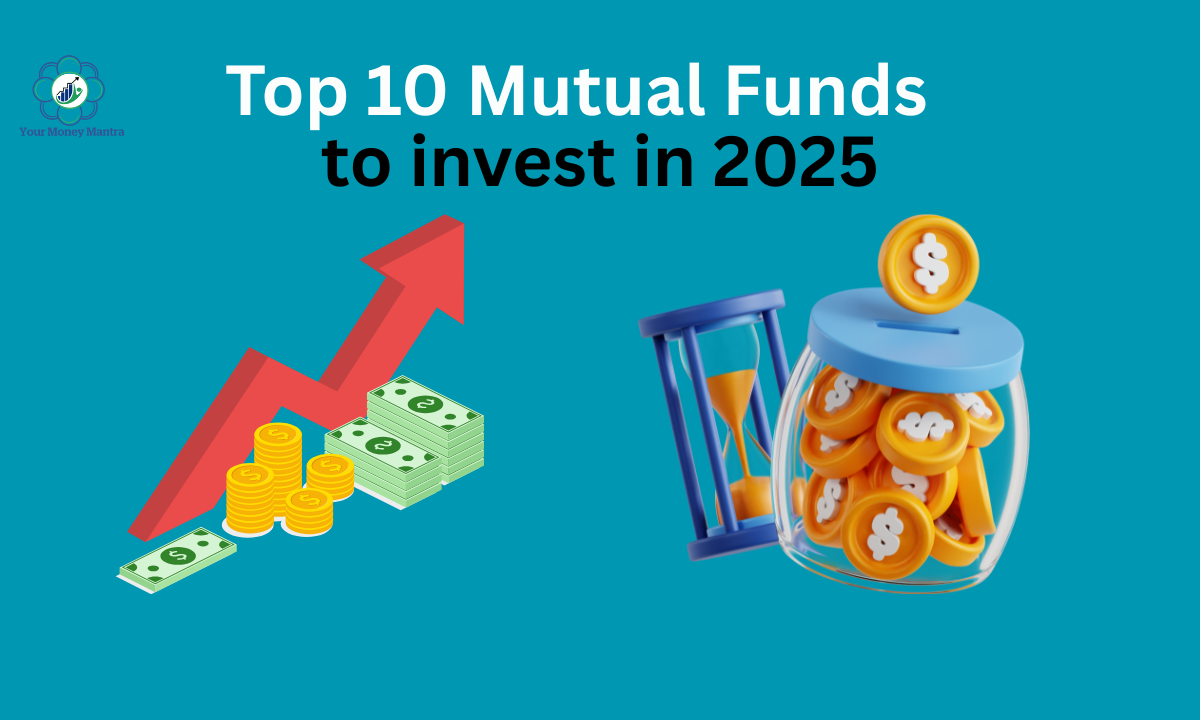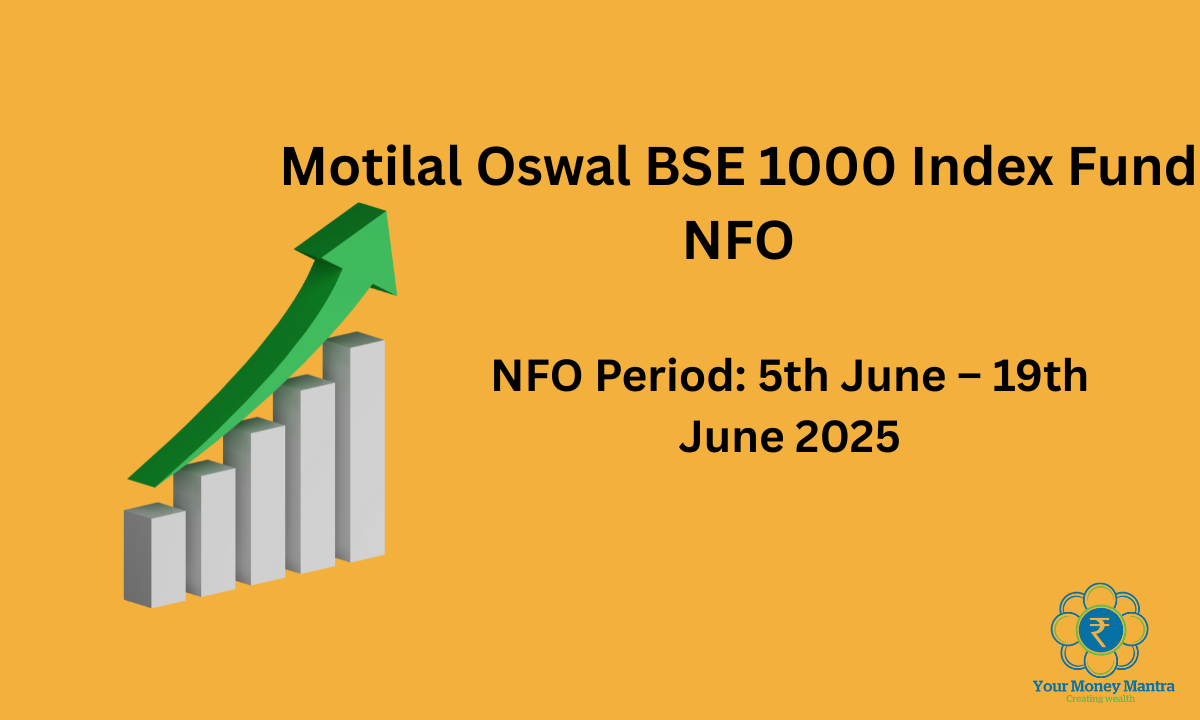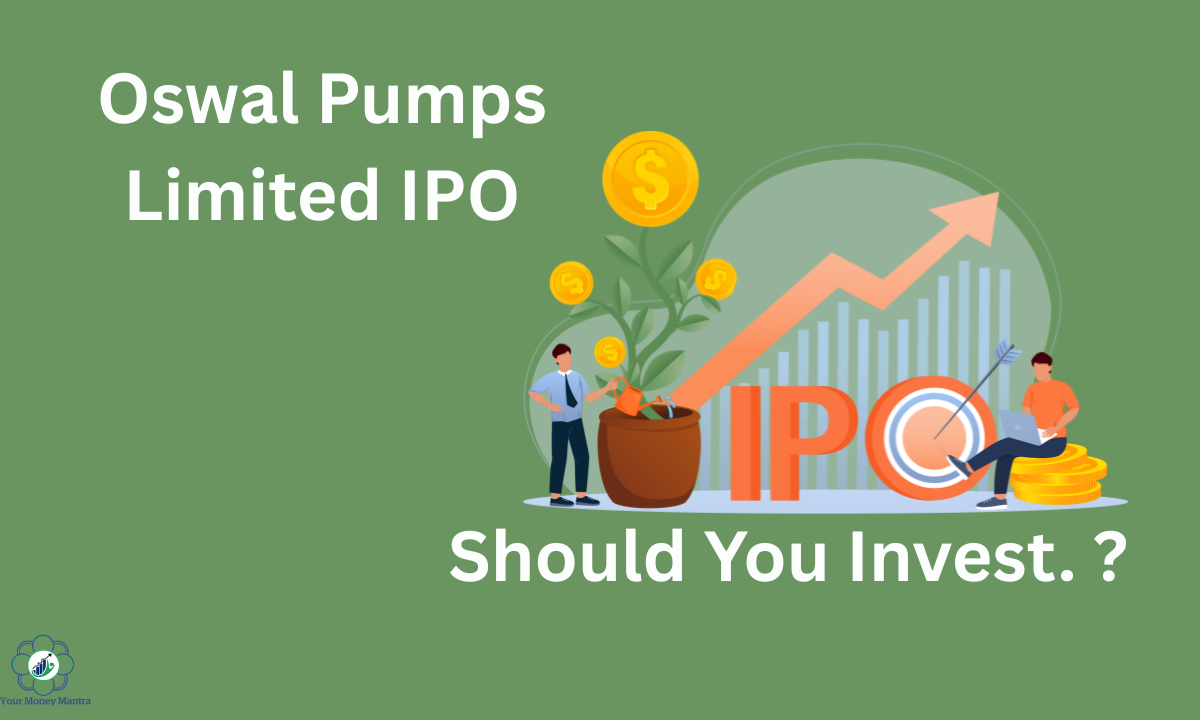Introduction
Investing through Systematic Investment Plans (SIPs) in mutual funds is one of the most disciplined and effective ways to build long-term wealth. With the ever-changing dynamics of the stock market and macroeconomic factors, choosing the right mutual fund scheme becomes critical, especially when you’re investing for the long term. In this guide, we explore the Top 10 SIP Mutual Funds to Invest in 2025, specially curated for long-term wealth creation through equity mutual funds.
This article is designed to help investors, beginners, or experienced investors choose the right equity SIP funds for 2025 by examining historical performance, fund consistency, risk ratios, fund management, AUM, and overall investor confidence.
Why choose Equity SIP Funds for the long term?
Investing in equity mutual funds through a Systematic Investment Plan (SIP) for five years or more is one of the most effective strategies for long-term wealth creation. Here’s why equity SIPs make sense when held for the long run.
1. Power of Compounding Over Time
Compounding refers to the reinvestment of earnings, where both your principal and the accumulated gains together generate additional returns. In the early years, the growth might seem slow. But as the years progress, the returns start to multiply rapidly. SIPs in equity funds, when continued over 5+ years, benefit immensely from compounding because:
- Every SIP installment will get invested at different NAVs.
- The reinvested earnings themselves start earning.
- Over time, your portfolio accumulates into considerable wealth.
Example: Investing ₹5,000 per month for 5 years at a 12% annual return can grow to over ₹4 lakh in profit, and much more if continued for 10-15 years.
2. Averaging of Cost (Rupee Cost Averaging)
People usually see market ups and downs as risky, but SIPs benefit from them. Market dips allow you to accumulate more units, while rallies reduce the quantity, helping you average out the investment cost. This process smooths out the investment cost over time.
- In a 5+ year SIP, you invest across various market cycles, highs and lows.
This reduces the average cost per unit and improves long-term returns.
3. Time Reduces Market Risk
Equity markets are inherently volatile in the short term, but historically, they have rewarded patient investors over the long term. By staying invested for more than five years:
- You give your investment time to recover from short-term market dips.
- The probability of negative returns reduces drastically.
- The market’s ups and downs settle with time, and your investments start to grow steadily along with the economy.
According to past market trends, the risk of loss in equity mutual funds drops significantly after a 5–7 year horizon.
4. Superior Return in Comparison to Debt or FDs
While fixed deposits and debt funds offer capital protection, their returns are limited, often just enough to beat inflation. Equity mutual funds, though riskier in the short term, offer higher returns in the long run:
| Investment Type | 5-Year Average Return (Approx.) |
| Fixed Deposit | 5%–6% p.a. |
| Debt Mutual Funds | 6%–7% p.a. |
| Equity Mutual Funds | 10%–14% p.a. (over 5+ years) |
As a result, equity SIPs are well-suited for achieving long-term financial objectives such as:
- Retirement corpus
- Child’s higher education
- Buying a home
- Achieving financial independence
5. Habit Formation and Financial Discipline
By committing to regular contributions, SIPs help cultivate financial consistency and long-term investment habits.:
- You align your spending and saving habits.
- Your savings become automatic and consistent.
- Over 5+ years, this disciplined investing turns into a powerful wealth-building habit.
This discipline is especially helpful for salaried individuals who may not have large lump sums to invest.
6. Tax Efficiency in the Long Term
Equity mutual funds enjoy favorable tax treatment when held for more than 12 months. When held for over 5 years:
- Profits above ₹1.25 lakh are taxed at just 12.5% (LTCG).
- ELSS (Equity Linked Saving Schemes) under SIP offer Section 80C deductions (up to ₹1.5 lakh/year), making them doubly beneficial.
In contrast, interest from FDs is taxed as per your income slab, which can go up to 30%
7. Suitable for Life Goals that Require Time
Most major life goals, like buying a house, funding your child’s college, or planning retirement, require large amounts. These goals are typically 5+ years away.
Equity SIPs are aligned perfectly with these long-term needs because they:
- Match the required investment horizon
- Offer growth potential needed to beat inflation
- Can be tailored to match your goal timeline and amount
8. Better Performance than Lump Sum in Volatile Markets
When you invest a lump sum in equity, the entry point matters a lot. But with SIPs:
- You invest gradually at regular intervals
- You don’t have to worry about accidentally investing all your money when the market is overpriced.
- You automatically benefit from market corrections.
Investing through SIPs for over five years allows you to follow a steady and thoughtful strategy instead of guessing the right time to invest.
Choosing Equity SIPs for more than 5 years is a proven, practical, and intelligent investment strategy for long-term wealth creation. It offers:
- Compounding
- Averaging benefits
- Higher returns
- Tax advantages
- Reduced risk over time
Whether you’re planning for retirement, a child’s education, or simply growing wealth, equity SIPs over a 5+ year horizon are a smart and accessible way to meet your financial goals.
Tip: Stay invested, don’t stop SIPs during market corrections, that’s when they work the best.
Criteria for Fund Selection: A Deep Dive
Selecting the best SIP mutual funds for long-term investment, especially for horizons beyond 5 years, requires more than just checking past returns. A good fund must demonstrate consistency, risk-adjusted performance, sound management, and investor confidence. Below is a detailed breakdown of the key factors considered in shortlisting the top SIP equity mutual funds for 2025
1. Consistency of Performance (5-Year / 10-Year CAGR)
Past returns don’t guarantee future performance, but consistency over longer periods gives a strong indication of a fund’s resilience and reliability. We analyze:
- 5-Year CAGR (Compound Annual Growth Rate): Reflects medium-term performance and how the fund has handled market cycles.
- 10-Year CAGR: The 10-year CAGR is a very good indicator of sustainable performance and growth.
- Funds that have delivered above-average returns compared to their peers and benchmarks over these timeframes are more reliable for long-term SIPs.
2. Fund Manager’s Track Record
A fund manager’s expertise and judgment play a crucial role in shaping the fund’s overall performance. We evaluate:
- Manager’s track record with this specific mutual fund..
- Track record during market ups and downs.
Their track record of managing other well-performing schemes within the same asset management company (AMC).
3. Expense Ratio
This is the fee charged by the fund house for managing the scheme. It includes charges like fund management fees, administrative costs, distributor payouts, and miscellaneous expenses.
- When expenses are low, a larger share of the returns goes to you.
4. Assets Under Management (AUM)
AUM reflects the combined worth of all investor assets currently managed by the mutual fund..
- Higher AUM shows investor trust and acceptance.
- In equity mutual funds, a moderate to high AUM typically indicates stability and confidence of the investor. However, if the fund is small-cap or mid-cap, an overly large AUM can reduce the fund’s agility, making it tougher to shift investments efficiently during volatile market situations.
5. Risk measurement ratios like Sharpe Ratio,Standard Deviation, and Alpha
We analyze whether the fund delivers adequate returns in proportion to the amount of risk assumed by investors. Key metrics include:
- Sharpe Ratio: Sharpe Ratio indicates how much excess return a fund generates for every unit of risk taken. Higher Sharpe = better risk-adjusted performance.
- Standard Deviation: Indicates volatility. A lower value is better if the fund still delivers healthy returns.
- Alpha: Shows outperformance against the benchmark index. A positive alpha means the fund has added value beyond passive market movement.
6. Portfolio Quality & Diversification
We thoroughly examine the fund’s portfolio composition and its allocation across various sectors:
- Does it hold quality, growth-oriented companies?
- Is it over-concentrated in any one stock or sector?
- Does it have adequate exposure to emerging opportunities?
7. Investor Trust & Brand Reliability
Beyond numbers, brand reputation matters—especially for long-term SIP investments.
- We prefer funds from AMCs with a strong market presence, governance standards, and a history of protecting investor interests.
- Factors like service quality, transparency, investor communication, and responsiveness to SEBI norms are considered.
| Criteria | Why It Matters |
| 5Y/10Y Performance | Shows the fund’s long-term consistency and resilience |
| Fund Manager Track Record | A strong track record reflects the manager’s ability to steer the fund with skill and consistency. |
| Expense Ratio | Lower cost = higher effective returns over time |
| AUM | Reflects popularity, liquidity, and investor confidence |
| Sharpe Ratio, Alpha, Std Dev | Helps assess risk-adjusted performance and volatility |
| Portfolio Quality | High-quality holdings mean better downside protection |
| Brand Reliability | Strong AMCs offer trust, governance, and better service |
Best SIP Mutual Funds to Secure Your Financial Future in 2025
Here’s our curated list of the best equity mutual funds suitable for SIP investments with a long-term horizon of more than 5 years:
1. Motilal Oswal Midcap Fund
- Category: Midcap Fund
- 5-Year CAGR: 32% (Approx)
- Expense Ratio: 0.70%
- AUM: ₹30,000+ Crores
- Why Invest?:
- It is one of the best-performing midcap funds over the 5-year and 10-year periods.
- Ideal for a Person willing to long long-term wealth.
- Managed by a competent team headed by Mr.Niket Shah, Mr.Ajay Khandelwal, and Mr.Rakesh Shetty, with a consistent investment framework and bottom-up approach.
2. ICICI Prudential Infrastructure Fund
- Category: Sectoral
- 5-Year CAGR: 32.63%
- Expense Ratio: 1.86%
- AUM: ₹7900+ Crores
- Why Invest?:
- The fund invests nearly 93–94% in equities, primarily in core infrastructure sectors like construction, energy, and materials, key beneficiaries of India’s infra push
- Managed by highly experienced fund manager Mr.Ihab Dalwai (since 2017) and Sharmila D’Mello.
- Perfect for investors focused on long-term wealth creation.
3. SBI PSU Fund
- Category: Thematic
- 5-Year CAGR: 31.04%
- Expense Ratio: 1.87%
- AUM: ₹5200+ Crores
- Why Invest?:
- Focused on high-quality PSU companies
- Managed by Mr. Rohit Shimpi, the fund shows a disciplined selection approach within PSU companies.
4. HDFC Infrastructure Fund
- Category: Thematic
- 5-Year CAGR: 31.5%
- Expense Ratio: 2%
- AUM: ₹2500+ Crores
- Why Invest?:
- Managed by veteran Mr.Srinivasan Ramamurthy.
- Invests 90–92% in equities across infrastructure-related sectors such as construction, energy, capital goods, and banks, tapping into strong structural tailwinds.
- Good for long-term core portfolio allocation.
5. Quant Small Cap Fund
- Category: Small Cap Fund
- 5-Year CAGR: 29.43%
- Expense Ratio: 1.60%
- AUM: ₹28,000+ Crores
- Why Invest?:
- Quantitative & Flexible Strategy.
- Superior Risk-Adjusted Metrics.
- Suitable for bold investors with high risk tolerance and a 5–10 year plus horizon seeking a multi-bagger return.
6. Bandhan Small Cap Fund
- Category: Small Cap Fund
- 5-Year CAGR: 29.96%
- Expense Ratio: 1.69%
- AUM: ₹10,000+ Crores
- Why Invest?:
- Strong Risk-Adjusted Performance.
- Managed by an experienced Team led by Mr.Manish Gunwani
- The fund has delivered impressive returns while maintaining a favorable risk-return balance.
7. HDFC Mid-cap Opportunities Fund
- Category: Mid Cap Fund
- 5-Year CAGR: 26.75%
- Expense Ratio: 1.42%
- AUM: ₹74000+ Crores
- Why Invest?:
- Invests in emerging small-cap companies.
- Suitable only for aggressive investors with high risk tolerance.
- Delivers substantial returns if held for 7–10 years.
8. Nippon India Small Cap Fund
- Category: Small Cap Fund
- 5-Year CAGR: 28.06%
- Expense Ratio: 1.44%
- AUM: ₹58,000+ Crores
- Why Invest?:
- Aggressive growth fund with high alpha.
- Large small-cap universe with solid research.
- Excellent for long-term SIP investors with high risk tolerance.
9. Aditya Birla Sunlife PSU Equity Fund
- Category: Thematic
- 5-Year CAGR: 29.89%
- Expense Ratio: 1.80%
- AUM: ₹58,00+ Crores
- Why Invest?:
- Impressive Risk-Adjusted Metrics
- Maintained Regular SIP Performance
- The fund taps into key sectors like banking, power, oil & gas, capital goods, and utilities.
10. Motilal Oswal Large & Mid Cap Fund
- Category: Large and Mid Cap
- 5-Year CAGR: 27.52%
- Expense Ratio: 1.76%
- AUM: ₹9,000+ Crores
- Why Invest?:
- Balanced Large- & Mid-Cap Exposure.
- High-Conviction, Focused Portfolio
- This fund uses a unique “basket” investing style where sectors like financials, healthcare, consumption, or capex are grouped based on long-term themes, giving the portfolio direction and clarity
How to Select the Best SIP for You?
A simple approach to choosing the ideal SIP plan for your long-term goals:
- Investment Horizon: Prefer funds with a consistent 5+ year track record.
- Risk Appetite: Choose large-cap/flexi-cap for moderate risk; small-cap/mid-cap for high risk.
- Financial Goals: Match funds with your objective (wealth creation, retirement, etc.).
- Diversification: Spread your SIP investments across categories to reduce risk.
- Review Performance: Track quarterly and annual performance vs. benchmark.
FAQs
Q1. Can I change the SIP amount later?
Yes, you can increase, decrease, pause, or stop SIPs anytime.
Q2. Is SIP better than lump sum?
For salaried individuals, SIP is more suitable due to regular income and risk averaging.
Q3. How long should I continue SIPs?
A 5-year horizon is essential to begin seeing results, but 10–15 years unlocks the full potential of compounding growth.
Q4. Which is the safest SIP?
Large-cap or balanced advantage funds tend to be less volatile than mid/small-cap funds.
Q5. Can I skip SIP in any month?
Yes, some platforms offer SIP pause or skip features.
Conclusion
Mutual fund SIPs are one of the smartest ways to grow wealth systematically. The top 10 funds listed here have been selected after thorough research, and they provide a blend of stability, returns, diversification, and long-term growth potential.
Whether you’re a beginner or an experienced investor, these funds are capable of delivering inflation-beating returns for 5+ years. Stay committed across market ups and downs, reassess regularly, and ensure your SIPs reflect your financial objectives.
Start early. Stay consistent. Let compounding do the magic.








1 thought on “Top 10 SIP Mutual Funds to Invest in 2025”